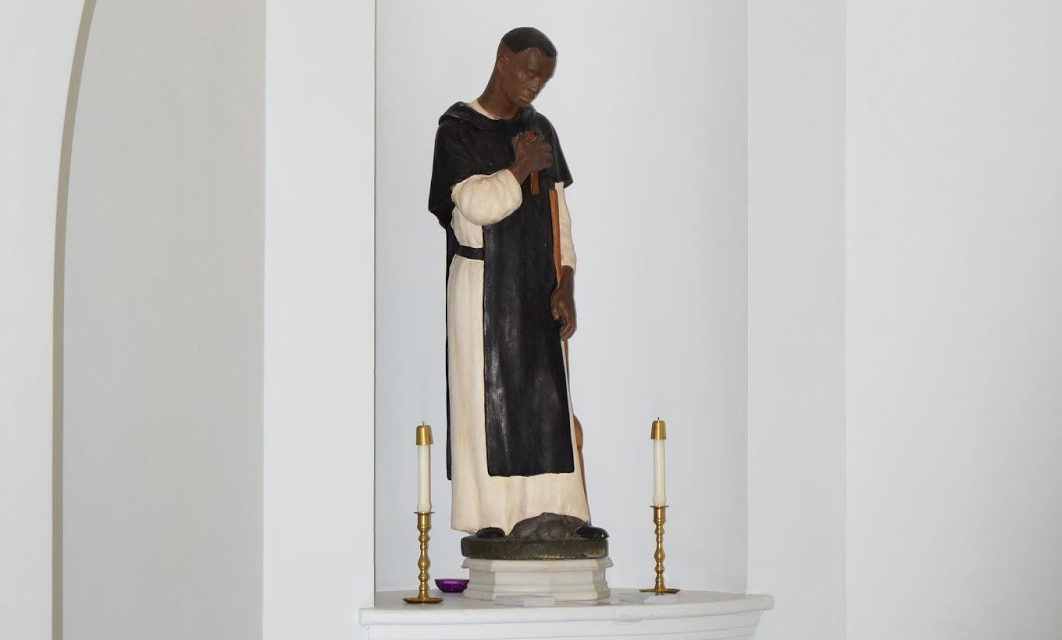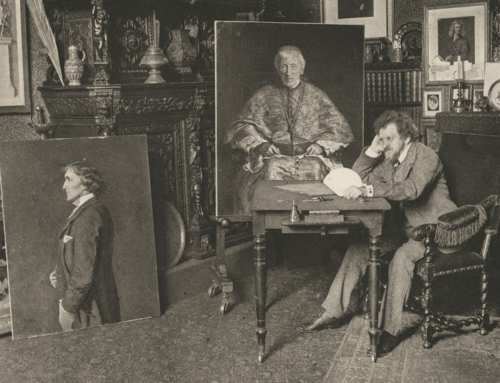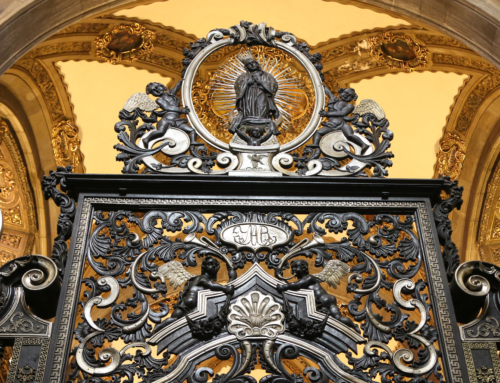Look at the photo that accompanies this post. What do you see?
This is a depiction of St. Martin de Porres, a Dominican friar who lived in Lima, Peru, from his birth in 1579 until his death on this day in 1639. Without ornamentation or even a halo to denote his sanctity, this humble statue is stationed in one of the four corners of our cloister walk at the Priory of the Immaculate Conception in Washington, D.C.
The starkness of this figure is brought into relief by contrast. In another niche down the corridor sits a statue of St. Thomas Aquinas. The Angelic Doctor stands a full two feet taller than Martin, clothed in a habit embellished with gold trim (paint, not the real thing!).
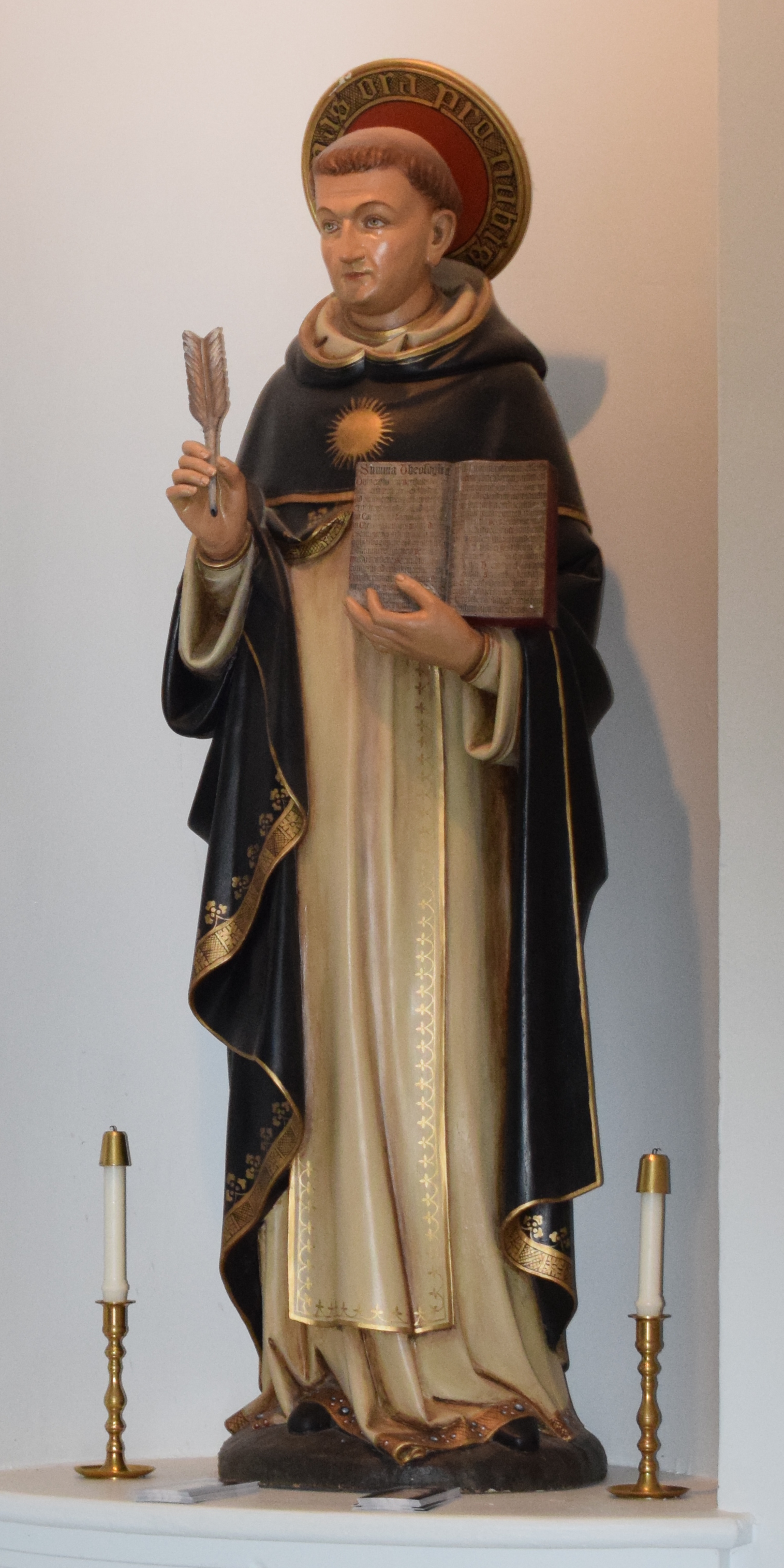
Further along, you will encounter our Holy Father, St. Dominic, equal to St. Thomas in stature and dress.
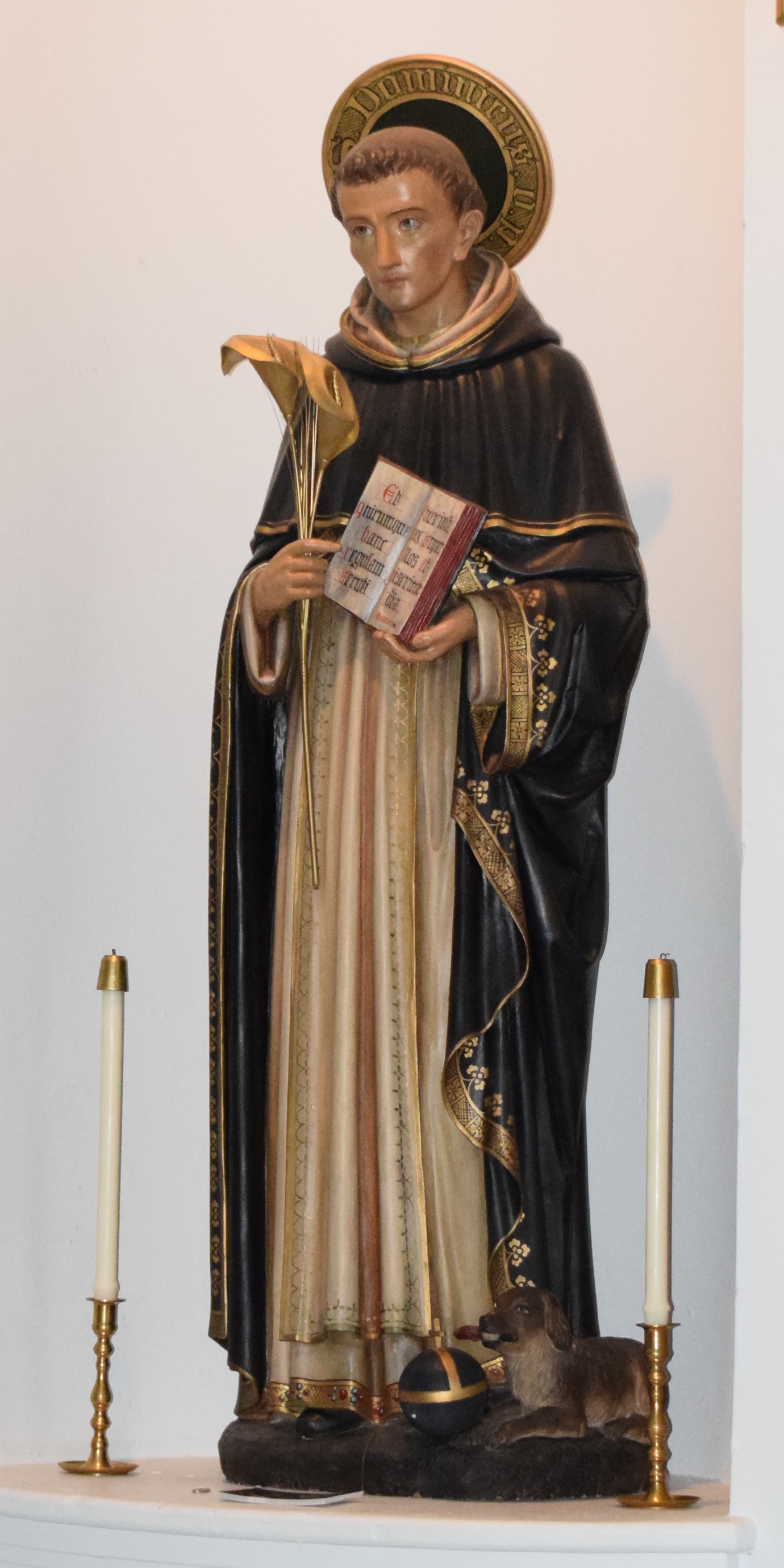
If you were to visit the fourth corner, you would arrive at an even taller statue of Our Lady crowned as Queen, holding the Christ Child in one arm and a golden scepter in the other.
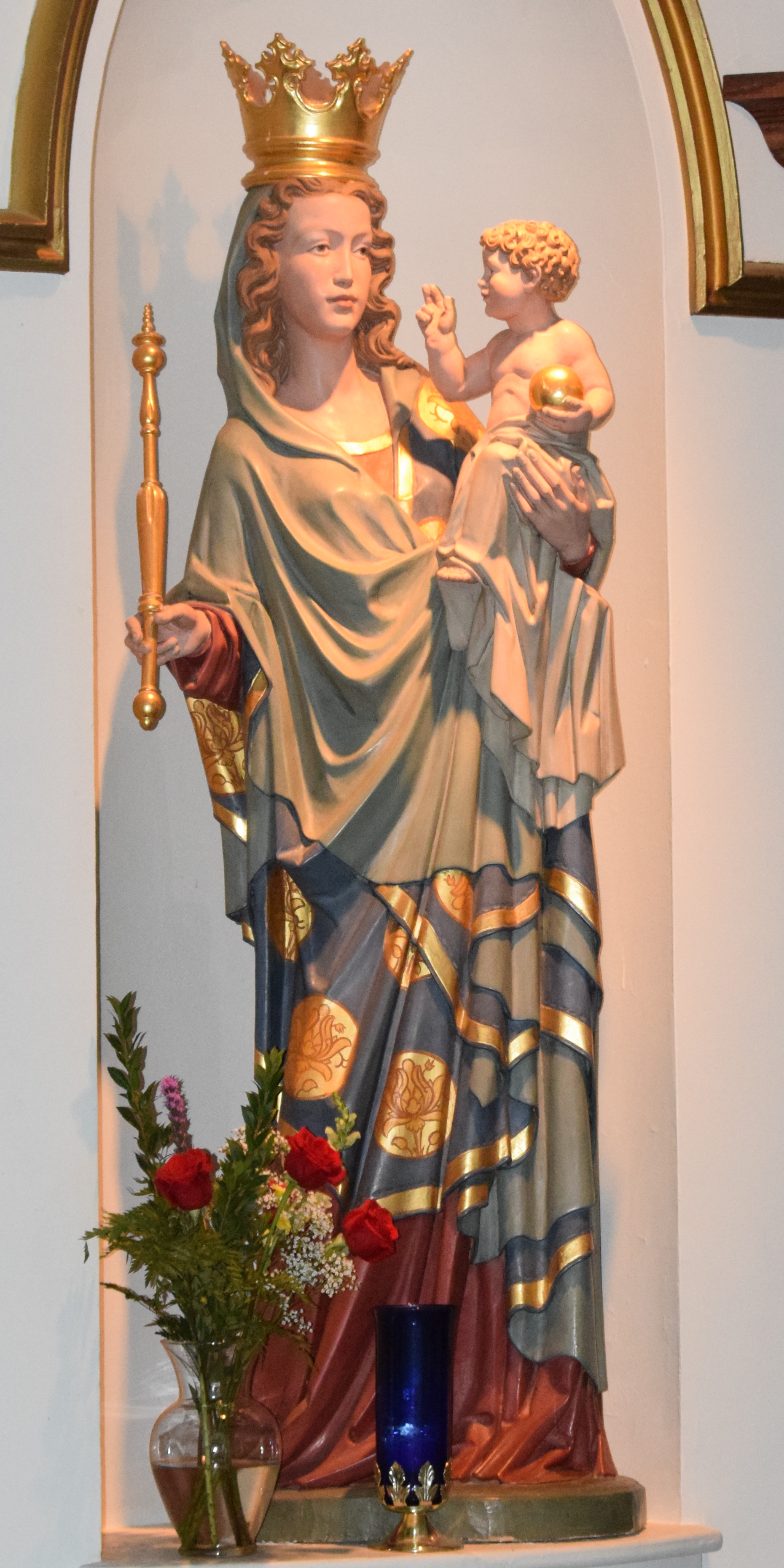
Our representation of St. Martin is a poor statue of a poor man. Which is not to say that the other saints were opulent bourgeoisie who found a side door into the Kingdom. Far from it! Sts. Dominic and Thomas were also poor friars. Our Lady was the poor wife of a simple carpenter in a small town. The fact that we depict them in sanctified splendor represents one characteristic of God: he lifts up the lowly poor and makes them guests of his heavenly banquet.
The statue of St. Martin shows us the other side of the equation. To be raised up, one must be brought low. For St. Martin, poverty was a voluntary vow: an accepted invitation to follow Christ, the Poor One, more intimately and to share in his mission to the poor. Here’s what our Order’s Constitutions say about that vow:
Keeping in mind the words of the Lord who said, ‘Go sell what you have and give to the poor, and come, follow me,’ we have decided to be poor both in fact and in spirit…imitating Christ, ‘who for our sake became poor, that by his poverty we might become rich.’
St. Martin became poor for the sake of the poor. He spent his life ministering to the poor of Peru. Like his Lord, he was consecrated “to bring good news to the poor” (Lk 4:18). What sort of news? That the poor are blessed: “Blessed are you poor, for yours is the kingdom of God” (Lk 6:20).
This ministry to the poor was more revolutionary than any modern project in social justice. St. Martin was not merely some sort of proto-community organizer. The miracles and charity worked by him were not ends in themselves. Rather, they were indications to the poor he touched that they possessed profound dignity and worth—indeed, blessedness—in the eyes of their heavenly Father.
In Georges Bernanos’ The Diary of a Country Priest, an old monsignor, M. le Curé de Torcy, tells the novel’s protagonist, an unnamed young priest, that one of their clerical tasks is to teach poverty to the poor. Seeing that his confrere is confounded, he goes on to explain:
Ay, to the poor. God sends us to them first, and what is our message? Poverty. They were expecting something different. They were hoping for the end of their distress, and God takes Poverty by the hand and says: ‘Here is your Queen, recognize her, swear to honour her and be faithful.’ What a blow, my children!
Of course, the real state of affairs is that we are all relatively poor in the sight of God. It is not insignificant that the same beatitude in the Gospel of Matthew reads, “Blessed are the poor in spirit, for theirs is the kingdom of Heaven” (Mt 5:3). St. Martin was poor both in fact and in spirit, to which his statue in our hallway bears beautiful witness. May this model of Christ inspire us to live lives of Gospel simplicity, drawing all those we encounter closer to the riches of Heaven.
✠
Images: Dominican House of Studies.

